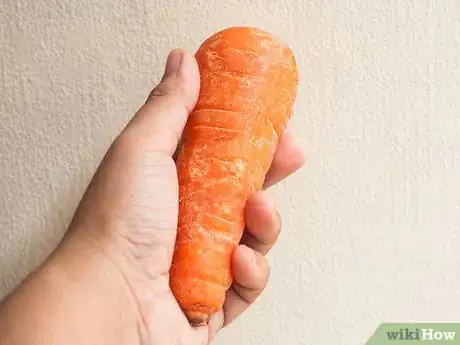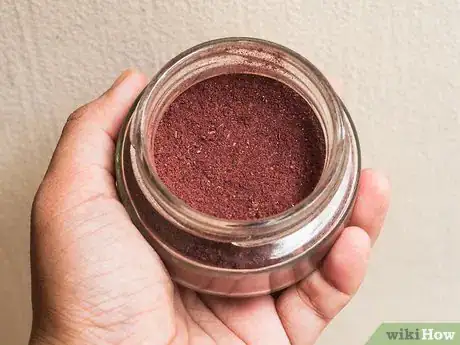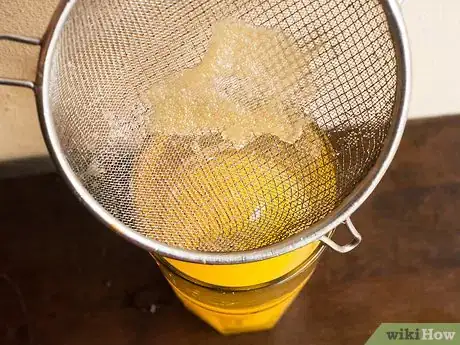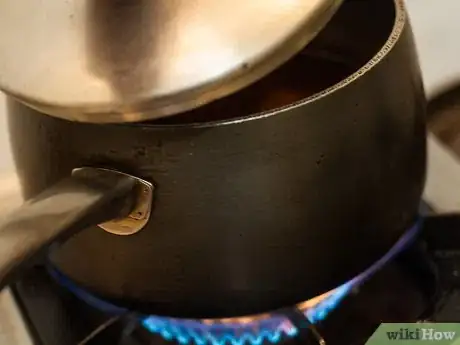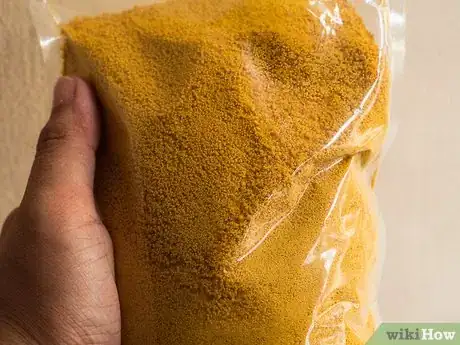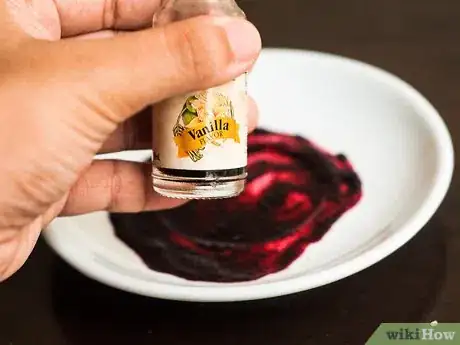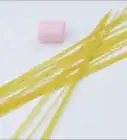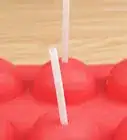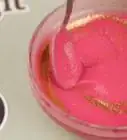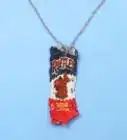This article was co-authored by Maria Short. Maria Short is a Baker and the Owner of Short N Sweet Bakery & Cafe in Hilo, Hawaii. With over 24 years of experience, she specializes in specialty desserts and wedding cakes. She graduated from L’Academie de Cuisine’s Pastry Arts Program with honors and studied at Baltimore International Culinary College. In 2019, Maria competed in the 6th season of the Food Network’s Holiday Baking Championship. In 2010, she had a cake named one of “America’s Most Beautiful Cakes” by Brides magazine.
This article has been viewed 38,104 times.
Whether you're making icing for your kid's birthday cake, whipping up a vegan tofu scramble, or making your ordinary meal more holiday-appropriate, if you cook or bake then you probably have encountered a use for food coloring. Unfortunately, many food colorings currently approved for sale in grocery stores in the U.S. are believed by some to be toxic -- even potentially cancer-causing![1] The good news, however, is that natural food dyes are safe, easy to make, and work just as well as the artificial ones that could damage your health. You can easily color your food using everyday cooking ingredients and other food items, many of which you may already have in your pantry.
Steps
Making Dyes from Vegetables
-
1Choose vegetables with consistent coloring. Greens with dark leaves (such as spinach) and many root vegetables (such as carrots and beets) tend to work well as food dyes because they have deep, consistent, opaque coloring. Your natural food dyes will be most effective if you choose veggies that are mostly one color throughout (and which have a color that is bright or deep).[2]
- Some vegetables may seem like good candidates for natural food dye, but if they have high water content (as does celery) they will actually produce very weak, light shades.
- Many vegetables (even those with vibrant coloring) lack the thick, concentrated juices produced by many fruits. In general, do not expect vegetable-based food dyes to be as bright or even as those made from berries. Beets (for red) and carrots (for orange) are exceptions to this rule.
-
2Boil your vegetables. Some vegetables leach color into the water when boiled. The vegetables that work best for this are those with lots of water content (and therefore juices) that are also deeply hued. Red cabbage (for purple) and beets (for red or pink) are two great examples of vegetables that can be boiled to extract their coloring.[3]
- For a more concentrated color, only use as much water as is needed to barely cover the vegetables. The colored water becomes the dye -- the more you dilute it, the lighter the shade.
- A good rule of thumb for figuring out which vegetables produce the best colors is that those that stain your fingers when handling them will also easily dye the foods with which they come into contact.
Advertisement -
3Dehydrate your vegetables or herbs. Use a food dehydrator or set your oven to 150 degrees Fahrenheit and place the item(s) inside on an oven-safe tray. Cook them until they are as dry as possible (without becoming burned); this could take up to six hours.[4]
- For large vegetables (especially sphere shaped ones), cut them into extremely thin slices before dehydrating them. This will speed up the process and dry them more consistently.
- Once dried, your vegetables can be safely stored in an airtight container for several months to a year.
-
4Grind the dried veggies into a powder. Use a coffee grinder or food processor to do this most efficiently. The finer the powder, the less the dye will affect the texture of the food you wish to color.[5]
- You can also use a mortar and pestle to grind the veggies by hand, but this will take much longer and could result in less even consistency.
- Thoroughly rinse off any utensils you use to make the powder before using them to grind up a different color of dried food. This will keep you from contaminating the color and flavor (if any) of your next veggie powder.
-
5Select foods that are already in powder form. Many vegetables/herbs can be purchased in dried, powdered form, which eliminates the need to do the drying and grinding yourself. Just be sure to select those without added spices or flavoring so you don't influence the flavor of the food you wish to color.
- If you are not worried about watering down your food, you can mix the powder into a small amount of water or other liquid and then stir this into the food. Do this gradually to achieve the right color and avoid over-saturating your food.
- For yellow dye, use stale turmeric. Turmeric is often used to give vegan puddings and tofu scrambles their "eggy," yolk-like shade. Stale turmeric tends to have lost quite a bit of its natural flavor, so use this to avoid influencing the taste of your colored food.
Making Dyes from Fruit Juice
-
1Choose fruits with opaque juices. Although many fruits are very brightly colored, their juices do not always make for good food dye. Many citrus fruits, for example, have highly translucent juices (such as oranges and lemons), which do not stain other foods very effectively. Berries, on the other hand, are very effective for coloring foods.
- To figure out which fruits will work best for your purposes, squeeze or blend fruits and pour the juice into a clear glass. Hold the glass up to the light; the less light that passes through, the better the juice will work as a food dye.
- For red or pink coloring, raspberries and cherries are good options; strawberries produce a lighter, more pastel shade of pink. For blue or purple, try blackberries or blueberries.[6]
-
2Juice or blend the fruit. Unlike with boiling vegetables to leach out their color, fruit juice food coloring is made of the fruit itself. For berries, stick them in a food processor or blender in order to liquefy them for your dye. For hand fruits, you can use a juicer instead (but again, most of these types of fruits don't make good dyes).
- You can start with either fresh or frozen fruit if you are blending it, but fruits must be fresh in order to juice them effectively.[7]
- Be sure to remove any pits, large seeds, or inedible peels before tossing fruit into the blender; these can ruin your machine and will not help your food dye production efforts.
- Add a very small amount of water to the fruit if you are using a food processor in order to allow the fruit to adequately liquefy.[8]
-
3Strain the juice. Any time you blend or juice fruits, tiny seeds, skins, or other fibers (pulp) can end up in the juice. In order to preserve the consistency of the food you wish to dye, remove these elements from the juice by passing it through a mesh sieve (with very small holes) or a cheesecloth.[9]
- Straining is essential for maintaining consistency and smoothness in your dyes. However, if you are going for a less even look, you can choose not to strain the fruit juice (so long as there are no seeds in it!).
- Very finely-blended berries will be impossible to strain completely and will most likely end up with tiny flecks of skin and fibers in them; if this is not acceptable, consider juicing or boiling instead.
- Don't use a sieve or strainer with mesh that is large enough for seeds and fibers to pass through. Test-strain a small portion of your juice to make sure your mesh is effective.
-
4Reduce the juice. In some cases, the strained juice itself will be sufficient as a food dye. However, you can increase the intensity of the color by cooking off some of the water contained in the juice. Pour the juice into a small saucepan and cook it over medium heat until it becomes the consistency of a thick paste.[10]
- This process results in a highly concentrated dye, which will have dense flavor, especially if it is made from berries. Be sure to use it sparingly to avoid flavor contamination.
- Skip this if you are going for a lighter, more pastel coloring.
Choosing the Right Natural Coloring Sources
-
1Pick compatible colors. If the food you are attempting to color is already a color other than white, this will influence the result of your dyeing efforts. Don't expect blue frosting to turn red if you add juiced raspberries to it, for example.
- When in doubt of how something will turn out, use a small portion of dye and food to test the outcome. You can then adjust the shade of your coloring substance if necessary by mixing it with other shades.
- Avoid mixing too many different colored dyes together when trying to settle on a color. This can end up making the dye lose its vibrancy and turn out brownish.
-
2Go for dye options with subtle flavors. In many cases, there are multiple options for making one color of food dye; in such cases, choose the one with the more subtle flavor. For example, both turmeric and saffron can be used for yellow coloring, but turmeric is less intense and usually makes a better choice.[11]
- An exception to this would be if you actually want to add flavor from your dye to the food. In such cases, be sure to match the flavor types (such as sweet with sweet) to avoid creating an unappealing mixture.[12]
- Not all dye production methods are equal in terms of intensity. Generally speaking, juicing and blending will create dyes that are both brighter and more intense tasting than the boiling or drying methods recommended for some vegetables.[13]
-
3Pay attention to consistency. To keep your food from becoming too wet while ensuring even coloring, take care to create food dyes that compliment the consistency of your food. This will take some trial and error, but common sense also goes a long way!
- For powdered coloring, stir into wet, blended foods such as cake icing or mashed potatoes. Sprinkling powder on a dry food will not spread the coloring consistently.
- For liquid coloring, use sparingly in all foods unless wetness is not a concern. Dry foods, for example, can become too soggy if too much liquid coloring is used.
-
4Mask unwanted flavors when necessary. Depending on the kind of food you are coloring, you can get rid of flavor contamination from your food dye by adding additional flavors. For instance, a hint of flavor from beet juice coloring in cake icing can be easily covered up with a drop or two of vanilla or peppermint extract.[14]
- This method doesn't work quite as well for savory foods colored with sweet dyes. If you color cauliflower red using raspberry puree, for example, even lots of salt and butter might not be able to mask the sweetness of the dye.
- Many extracts and other substances that can be useful for masking flavors, such as truffle oil, are quite expensive (and potent), so use them sparingly!
Community Q&A
-
QuestionAre there any more ways of making food coloring without boiling?
 GrayGray4231Community AnswerYes! For pink, use beet juice. For yellow, use turmeric powder and water. For purple, use thawed-out frozen blueberry juice. For green, use blended up water and spinach.
GrayGray4231Community AnswerYes! For pink, use beet juice. For yellow, use turmeric powder and water. For purple, use thawed-out frozen blueberry juice. For green, use blended up water and spinach.
Warnings
- In most cases, you won't be able to achieve the brightness or depth that non-natural food colorings can provide -- but this is a small sacrifice in order to avoid potentially toxic alternatives!⧼thumbs_response⧽
References
- ↑ http://www.ncbi.nlm.nih.gov/pubmed/23026007
- ↑ http://www.networx.com/article/8-ways-to-make-organic-diy-food-coloring
- ↑ http://www.networx.com/article/8-ways-to-make-organic-diy-food-coloring
- ↑ http://nourishingjoy.com/homemade-natural-food-dyes/
- ↑ http://nourishingjoy.com/homemade-natural-food-dyes/
- ↑ http://homemade-baby-food-recipes.com/homemade-food-coloring-and-natural-food-dyes/
- ↑ http://blog.foodnetwork.com/fn-dish/2014/12/how-to-make-homemade-food-coloring/
- ↑ http://blog.foodnetwork.com/fn-dish/2014/12/how-to-make-homemade-food-coloring/
- ↑ http://www.networx.com/article/8-ways-to-make-organic-diy-food-coloring
- ↑ http://blog.foodnetwork.com/fn-dish/2014/12/how-to-make-homemade-food-coloring/
- ↑ http://www.networx.com/article/8-ways-to-make-organic-diy-food-coloring
- ↑ http://homemade-baby-food-recipes.com/homemade-food-coloring-and-natural-food-dyes/
- ↑ http://homemade-baby-food-recipes.com/homemade-food-coloring-and-natural-food-dyes/
- ↑ http://homemade-baby-food-recipes.com/homemade-food-coloring-and-natural-food-dyes/
- ↑ http://nourishingjoy.com/homemade-natural-food-dyes/
About This Article
To make natural food coloring from fruit juice, choose a fruit that has an opaque juice, such as cherries to make red dye or blackberries to make purple dye. If you can, blend the fruit in a food processor or blender, or use a juicer for larger fruits, adding a little water to the mixture if you’re using a food processor, then strain the juice to remove seeds, skin, and fibers. If you want to intensify the color, reduce the juice by cooking it over medium heat in a small saucepan. If you want to learn more, like how to mask the vegetable flavors, keep reading the article!
